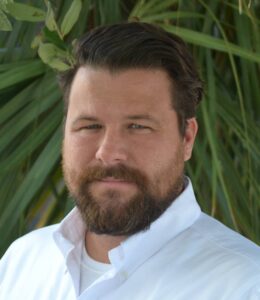By Jon Paul “J.P.” Brooker
The connection between Miami and the ocean runs deep. The city’s economy and quality of life is interwoven with the health of Biscayne Bay, the Miami River and the ocean. What happens on land impacts those waters, and what happens in those waters impacts Miami residents, their families and their businesses.
That’s why it’s critical that the city and its residents work together in a coordinated effort to protect the community’s vibrancy by improving the health of the surrounding waters.
Marine debris starts on land before winding up in the water and there is no bigger threat than plastic. Some plastic products may be recognizable even after 400 years in the ocean, and by 2025 the ocean could contain one ton of plastic for every three tons of fish.

To its credit, the city of Miami already is taking significant steps toward reducing plastic debris. It has a resilience office that focuses on all manner of climate issues, and it has worked with Miami-Dade County and Miami Beach on the Resilent305 Strategy. Now the city has an unprecedented opportunity to take a more dramatic step toward a waste-free Miami.
The city partnered with Ocean Conservancy and the University of Georgia to conduct a comprehensive study on the sources and uses of plastic. The Circularity Assessment Protocol (CAP) is the gold standard for determining where debris is coming from, and Miami is the first American city to use this sophisticated approach to gather the local information needed to create community-based solutions to improve the health of our waters.
Beginning last May, the field work included a survey of Miami residents and interviews with government, industry and nonprofit officials. The CAP analyzed issues such as the sources and types of consumer plastics, the cost of reusable products and alternatives to plastics, and recycling issues. It examined how plastics flow into the community, how they are consumed and how they flow out through waste management or into the environment. It also looked at consumer trends and public perceptions about waste and debris.
Among the key takeaways:
- Debris winds up in our waters from places that are not obvious. What happens in neighborhoods far from the Miami River or Biscayne Bay has an impact.
- There is shared responsibility for debris in our waters, from single-family homes to condo towers, from corner stores to office towers. Many Miami residents have no idea what happens to their waste.
- Nearly two-thirds of Miami’s plastic is manufactured in the United States.
- So many plastic types, from hard plastic to coated paperboard to film, contributes to confusion about how to properly dispose of waste.
- Using biodegradable or reusable alternatives is usually more expensive.
Where do we go from here?
The hope is to create a circular economy in which plastic materials are recirculated to reduce waste, pollution and harmful emissions to support a healthier ocean. Ideally, that circular economy would include principles such as eliminating single-use plastics and ensuring the remaining plastics are 100% reusable, recyclable or compostable.
Relying on the research from CAP, the Ocean Conservancy and the city of Miami will partner with local organizations to develop community efforts to help reach that goal. Within the next few months, this working group will propose new regulations that we hope the city will adopt.
Meaningful change will come from the Miami community and its decision-makers coming together to make real progress toward a waste-free future.
Jon Paul “J.P.” Brooker is the director of Florida Conservation and lawyer for Ocean Conservancy, the nation’s oldest marine conservation nonprofit organization. This piece first appeared in the Miami Herald. It is syndicated by The Invading Sea, a Florida editorial board collaborative.



